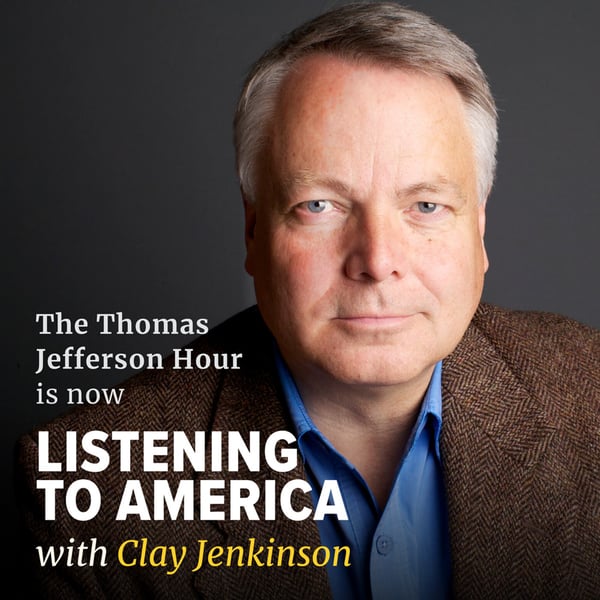#1586 Ten Things on Margaret Bayard Smith
Listening to America
Listening to America
4.6 • 1.1K Ratings
🗓️ 12 February 2024
⏱️ 59 minutes
🧾️ Download transcript
Summary
Clay Jenkinson is joined by regular contributor Dr. Lindsay Chervinsky for a spirited conversation about Margaret Bayard Smith, one of Thomas Jefferson’s greatest admirers. Mrs. Smith, who was 35 years younger than Jefferson, was the wife of the editor of the National Intelligencer, the first Washington, D.C. newspaper. Her letters and journals, printed as The First Forty Years of Washington Society, contain some of the most interesting details of Jefferson’s presidency, beginning with his inauguration on March 4, 1801. What she noticed and admired was the peaceful transfer of power in this our happy republic. Because Jefferson was a widower, Margaret Smith and Dolley Madison served as hostesses at some of Jefferson’s White House functions. Smith and Jefferson shared a love of nature. In fact, when Jefferson retired he gave Mrs. Smith a geranium plant she coveted. She and her husband Samuel Harrison Smith visited Jefferson at Monticello in August 1809, just a few months into his 17-year retirement.
Transcript
Click on a timestamp to play from that location
| 0:00.0 | Welcome everybody to this podcast introduction to this week's program. |
| 0:03.3 | Ten Things about Margaret Bayard Smith. |
| 0:05.2 | Lindsey, we had a great and spirited conversation about Margaret Bayard Smith. |
| 0:09.7 | We owe her so much for detail about the character of Jefferson, the world of the White House of Jefferson, |
| 0:15.8 | the world of Monticello after his presidency. |
| 0:18.9 | She's one of the chief sources we have on the inaugural day March 4, 1801. |
| 0:25.0 | What does it say that we still don't know much about these people like Margaret Bayard Smith, |
| 0:29.6 | that she's still sort of almost a footnote in history. We mine her letters and her diaries for |
| 0:36.3 | material but we don't really focus on what a remarkable human being she was. |
| 0:41.1 | Yeah, well I think there's a couple of things. So for one, you know, for a long time |
| 0:45.6 | history books like the initial history books that were written in the 19th century about the |
| 0:50.3 | revolution and then about the early years were really focused on capital G capital M great men and the |
| 0:57.1 | treaties they signed and the wars that they fought and Lord knows I'm interested in |
| 1:00.4 | that stuff so I'm not saying that we shouldn't write about that but I didn't |
| 1:03.6 | give a whole lot of space for women people of color people of lower classes it was |
| 1:09.0 | really about the big events that served sort of as you know like section headers in the textbook if you |
| 1:14.7 | well. So I think that that's part of it and that you know we're still sort of catching up in |
| 1:19.1 | some ways trying to to know more about people who just were a little bit more on the outskirts or even just sort of in the background at some of these big events. |
| 1:29.0 | The second piece is a lot of it is source-based. |
| 1:32.0 | So, you know, Margaret Baird Smith is relatively |
| 1:34.5 | remarkable as 19th and early or as 18th and early 19th century women go and that we |
| 1:40.0 | actually have a pretty extraordinary paper record about what she was up to and what she was doing and what she was thinking. |
... |
Please login to see the full transcript.
Disclaimer: The podcast and artwork embedded on this page are from Listening to America, and are the property of its owner and not affiliated with or endorsed by Tapesearch.
Generated transcripts are the property of Listening to America and are distributed freely under the Fair Use doctrine. Transcripts generated by Tapesearch are not guaranteed to be accurate.
Copyright © Tapesearch 2025.

